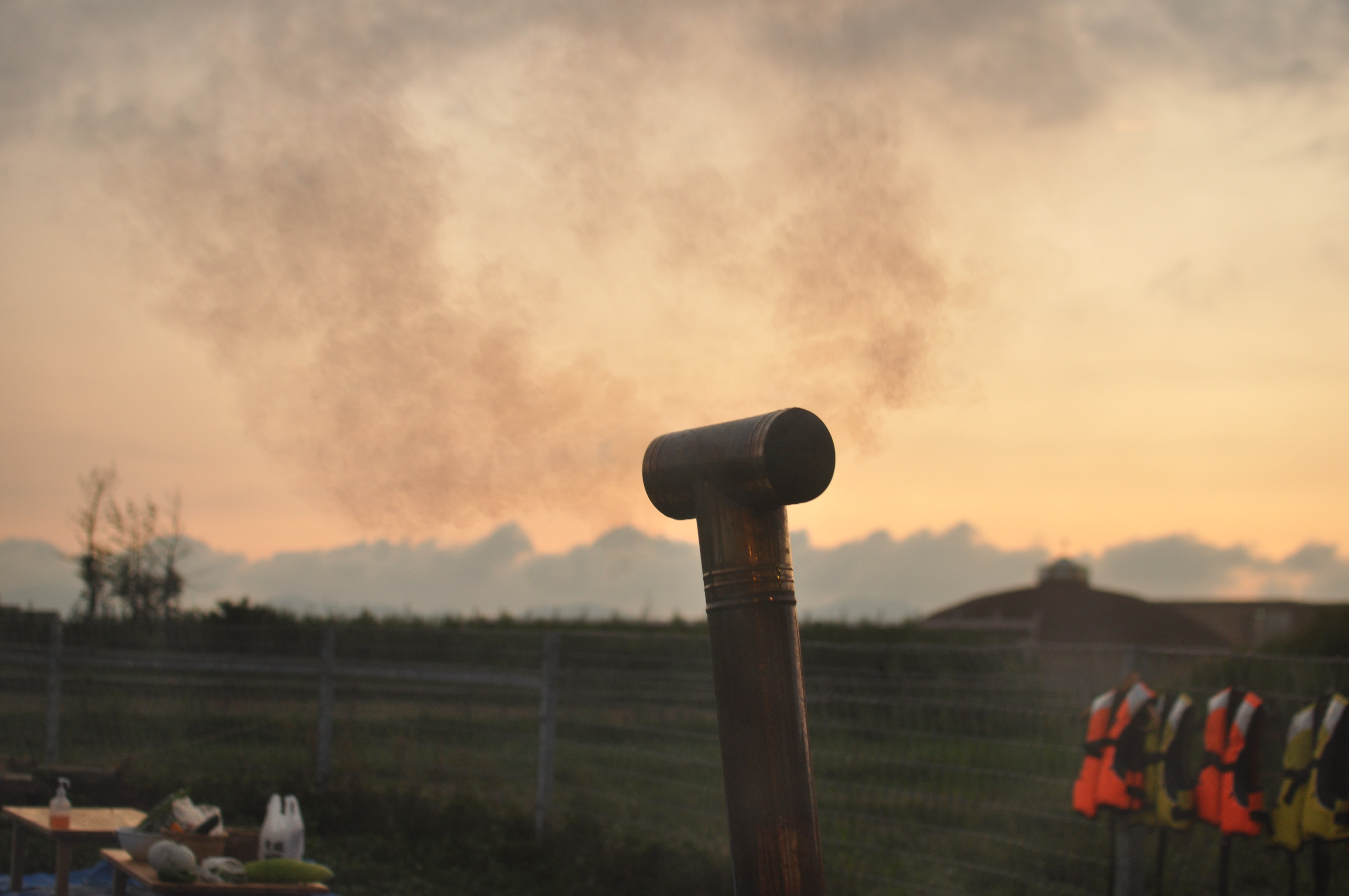
2019.10.04 Yamanoko Camp Report
Text:Aya Endo
In this issue we shall report on “Yamanoko Camp” held from 2nd to 3rd August.How shall we spend the night? What activities shall we choose to do in order to get ready for the camp? Adults (staff) of Class Akebi had meeting several times since June. An initial idea we had in our minds was to search the origin of water in nature, as the class theme of May and June was “exploration of water”. However, as we discussed, we started to doubt this; perhaps setting a scene based on something adults want children to encounter is not how the whole project should be, but it rather should be focused on how much fun children can have.
As a consequence, after a series of discussions, we decided to choose “the ocean” as the main field of the camp; while we wanted to leave some room for “exploration of water” to happen, we also wanted children to simply have fun through the activities.
Once the field is decided, our next topic to ponder was meal during the two days and a night. During our next discussion on meal issues, an idea to have children gather ingredients and food themselves by NOT shopping came up. That way we can expect many spontaneous discoveries and learnings in the process of planning the menu.
Not only the ocean is the field for play, but also for collecting food; we decided to make tools for fishing as well! To begin with, we made a visit to the traditional craftsman who makes Shonai zao (or Shonai fishing rod) to see what we can do -and he gave us a set of Shonai zao for children! Then we also made simple version of fishing rods with a stick and thread. As for the fish net, we used bamboo branches and strings. In addition to all this, we asked a local fisherman to come to Yamanoko to talk to class about types of fish we can catch in the ocean of Tsuruoka.
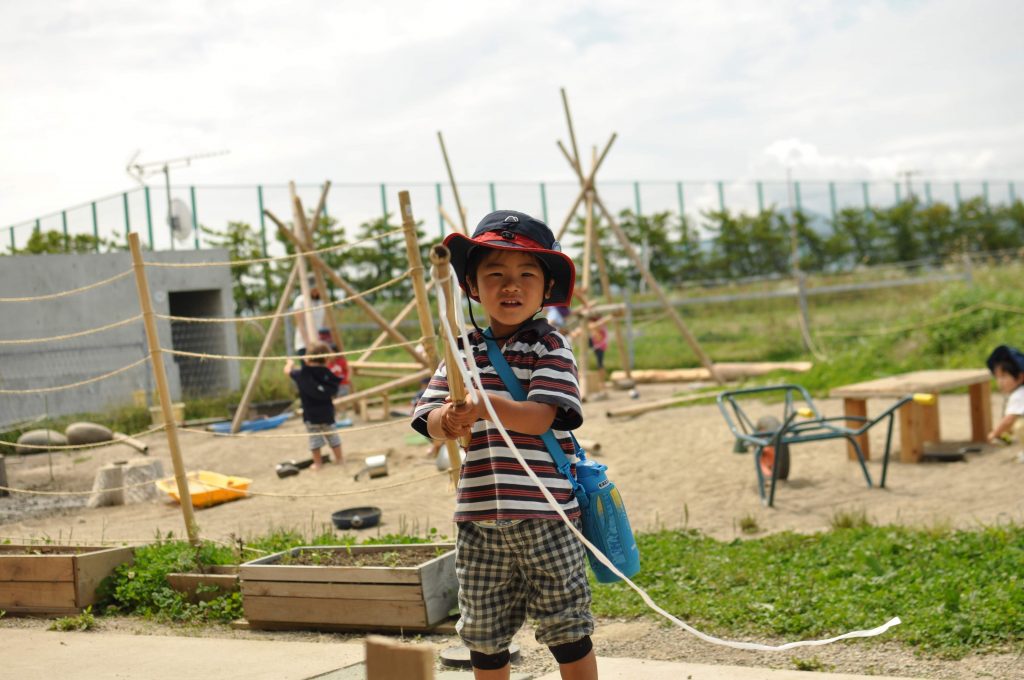
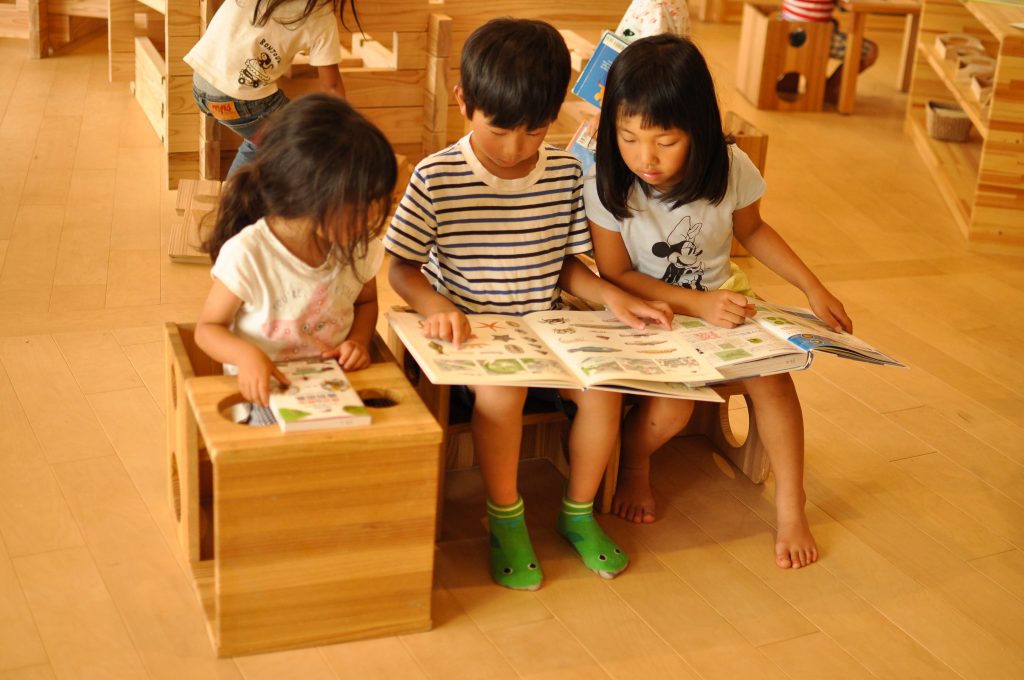
Needless to say, gathering every kind of ingredients from the ocean is not possible; we had to discuss with Akebi children on how we should collect vegetables. Whilst the discussion went on, one idea that came up was making a hotdog. “What are hotdogs made out of?” questioned an adult, “meat!” replied children. “How shall we collect meat?” we questioned again, which made the whole group ponder “hmmm.” “We can kill cows!” “No it’s too cruel to kill” “It’s okay to kill to save our lives” “But it must hurt…” children’s minds and emotions are swayed as the discussion proceeded.
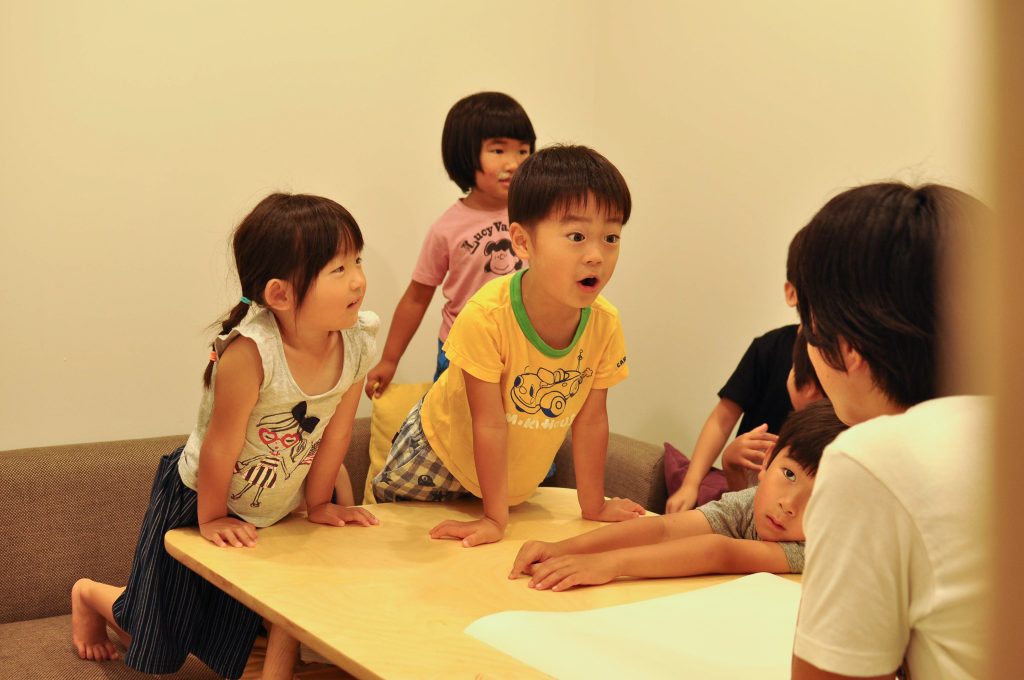
We can’t kill cows, but we can grow vegetables. But the amount of vegetables we grow in our garden is too little. So what to do -this was our next discussion topic. Eventually we all agreed on one of the ideas “we can exchange with our gifts!”, and from the day this was all decided, the whole class started the project on creating handmade “gifts” to trade with the vegetables at our little market “Akebi Open Day”. It impresses me how a simple drawing on a piece of paper turn into a magnificent artwork with a frame made out of a cardboard that makes us want to decorate home with. On both of the two days of Akebi Open Day, many of the parents/guardians and members of Spiber visited and joined us for the exchange -thanks to all your support we ended in a great success!
Every child must have acquired a strong sense that “I exist with power that can affect the others” watching adults they don’t know come and pick his/her gift saying “I like this!” unaware of who the creator was, and was traded with a fresh kabocha pumpkin. Children and adults felt so rich and abundant throughout the experience. I was deeply moved to see just how many vegetables we were eventually able to collect from such fun class activity (we could have definitely opened a grocery store)!
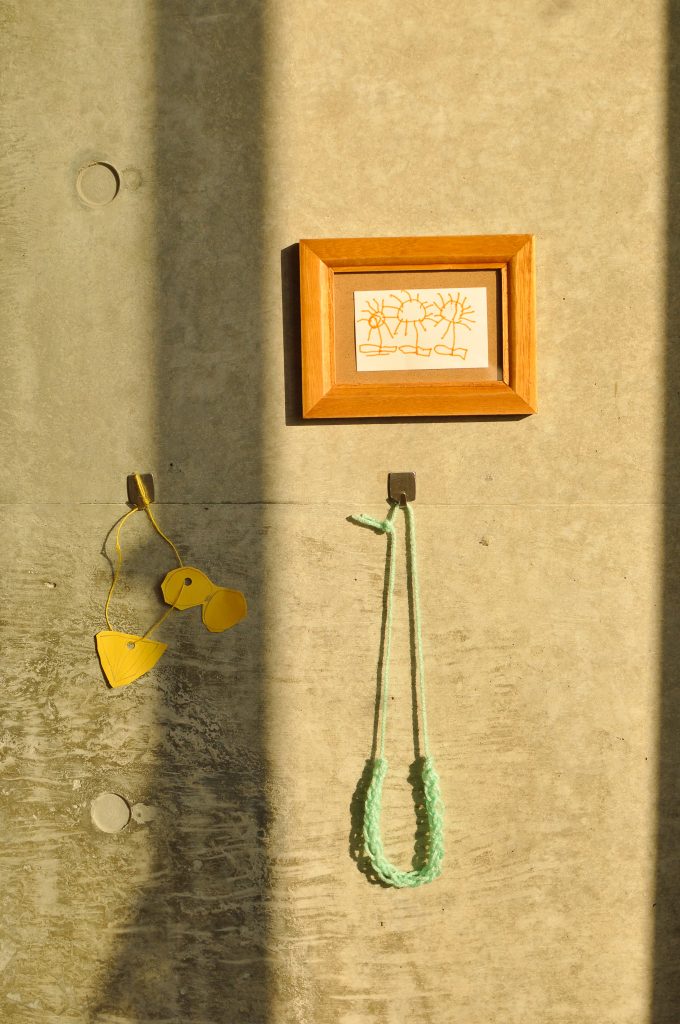
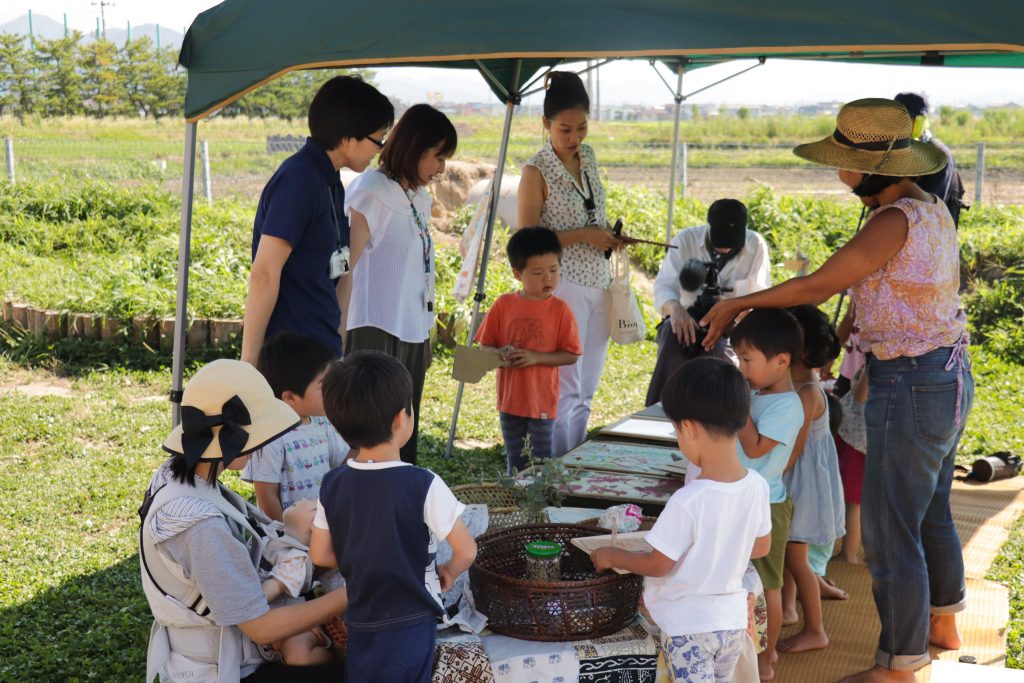
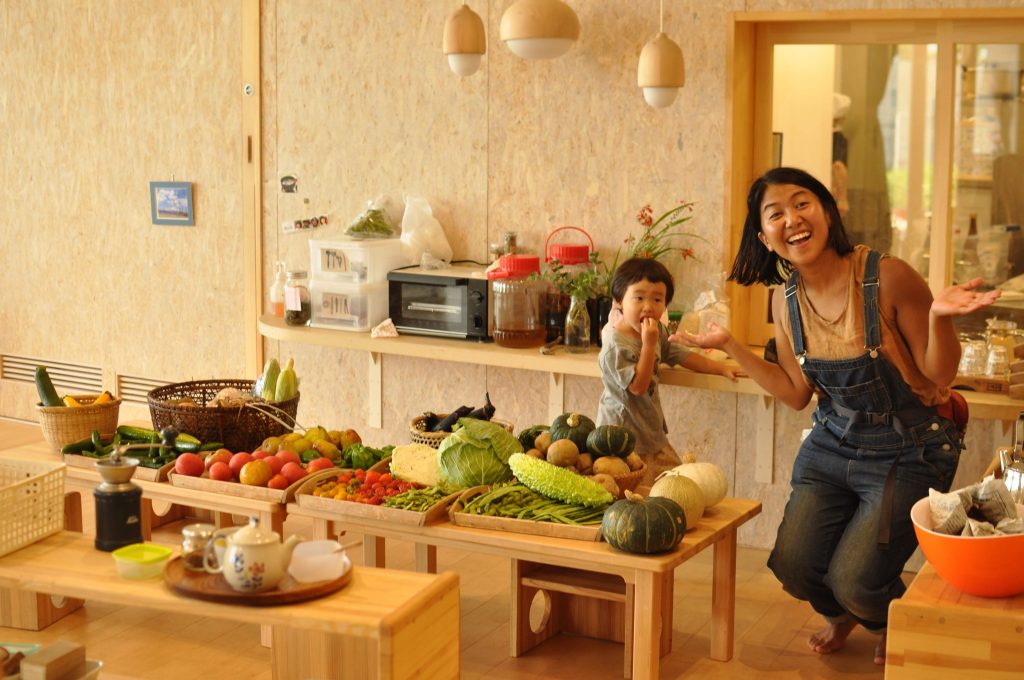
—
On the day -2nd August; with feeling a little nervous as well as a great excitement, the day had started! We all got in the bus, and rode to Yunohama Beach.
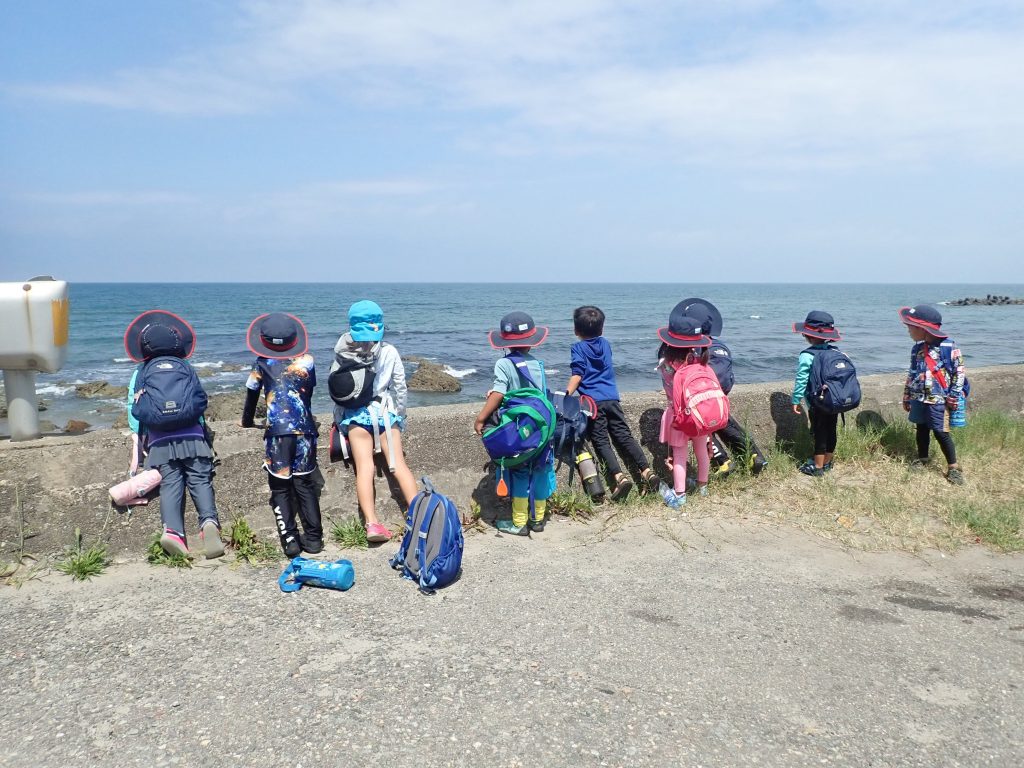
Having each adult watching over two children, we enjoyed playing in the ocean and catching fish and shellfish. Oh the lively sound of children and their faces full of excitement! Just before the lunch time, we adults were planning on a little adventure to search for the origin of water. T-san gradually started to make a move towards the spot. “Where are you going T!” followed children from behind, running. After a walk along the shore, we arrived at a dusky tunnel that connects the ocean and a mountain.
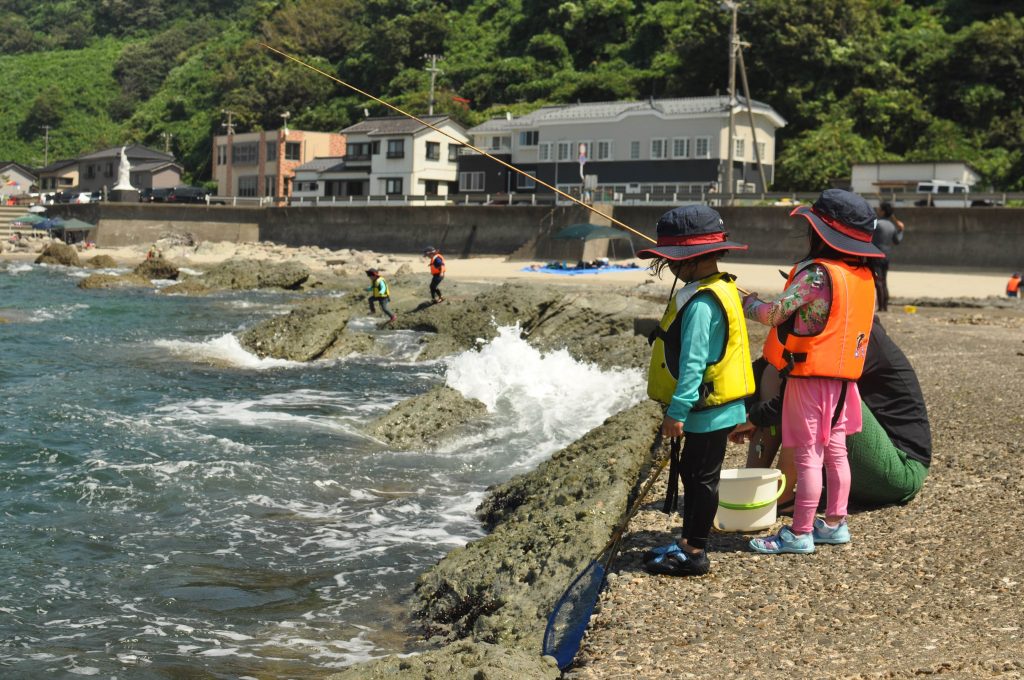
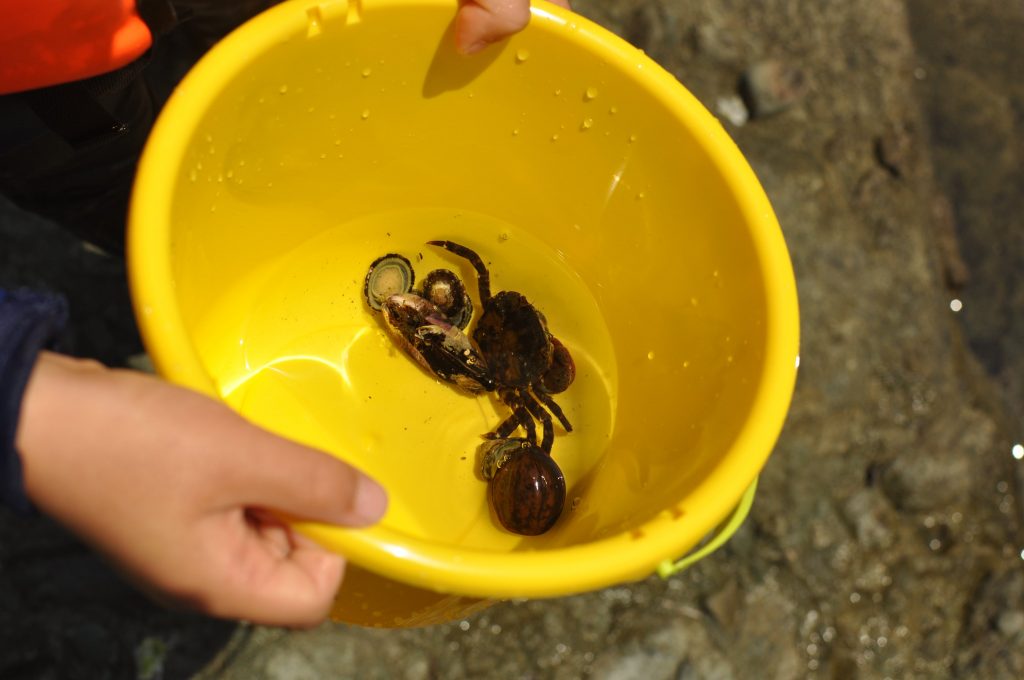 The sound of us calling “hello!” towards the tunnel echoed towards the other side. “What do you think we can find if we go further in this tunnel?” T-san questioned, and children looked towards the end of the tunnel, pondering. After a short silence, “let’s go” said Takuto and the group of us were headed.
The sound of us calling “hello!” towards the tunnel echoed towards the other side. “What do you think we can find if we go further in this tunnel?” T-san questioned, and children looked towards the end of the tunnel, pondering. After a short silence, “let’s go” said Takuto and the group of us were headed.
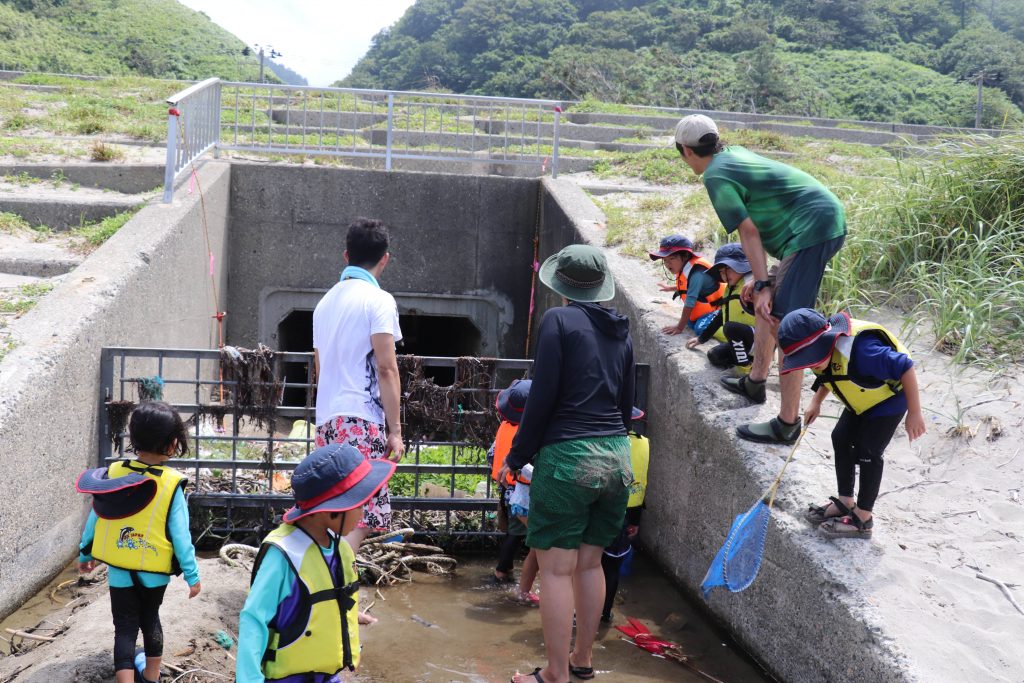
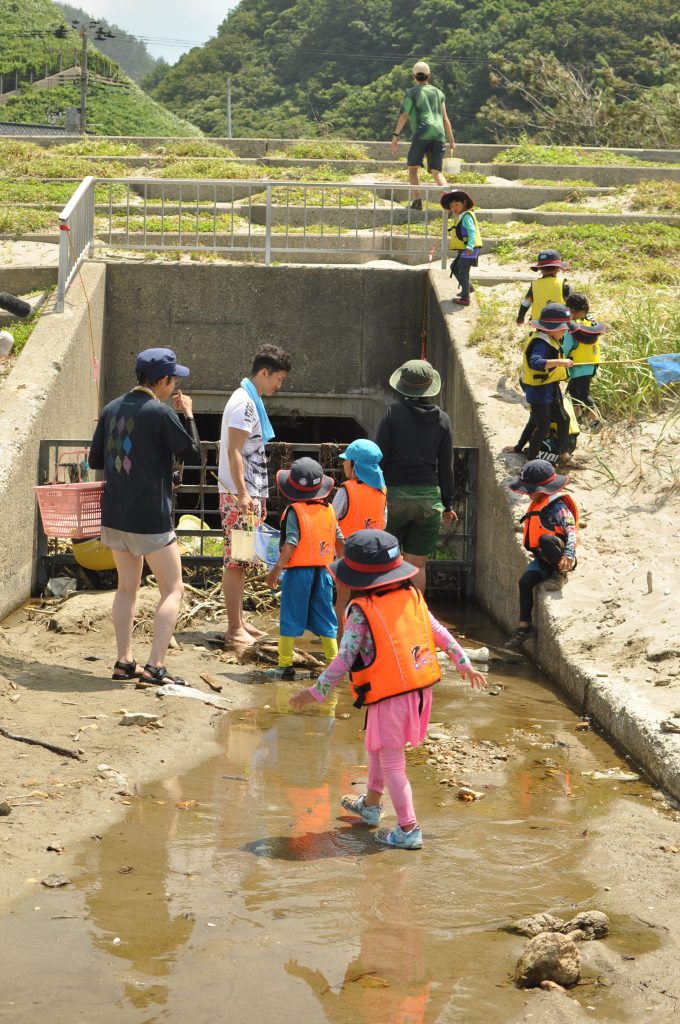
We ended up at a waterway. We walked the steps down and headed to where it takes us and eventually found a small waterfall coming from the forest in the mountains, falling into a waist deep natural reservoir. Each children then took out an empty plastic bottle (brought from home for this purpose!) and filled it with the ice cold water from the forest, realising the contrast with the lukewarm sea water they had been immersing themselves into a while ago.
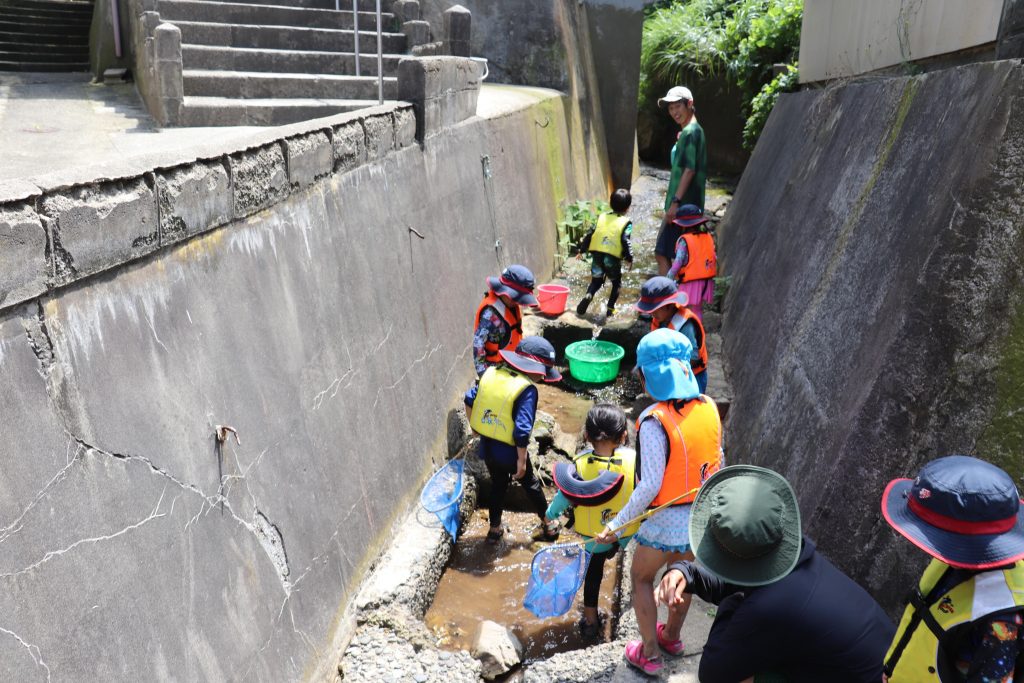
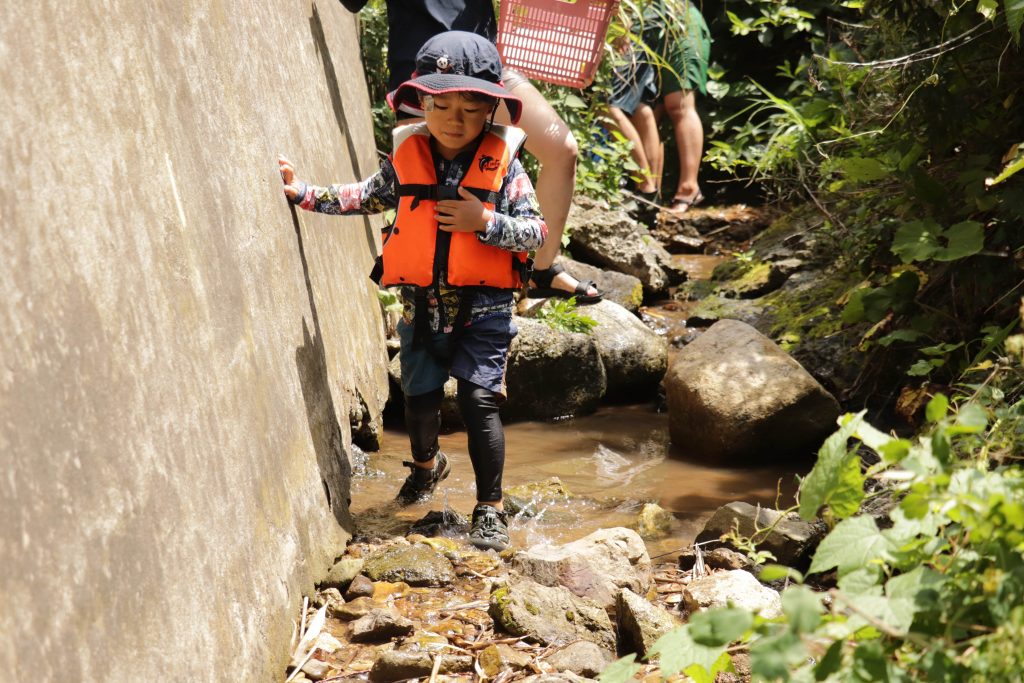
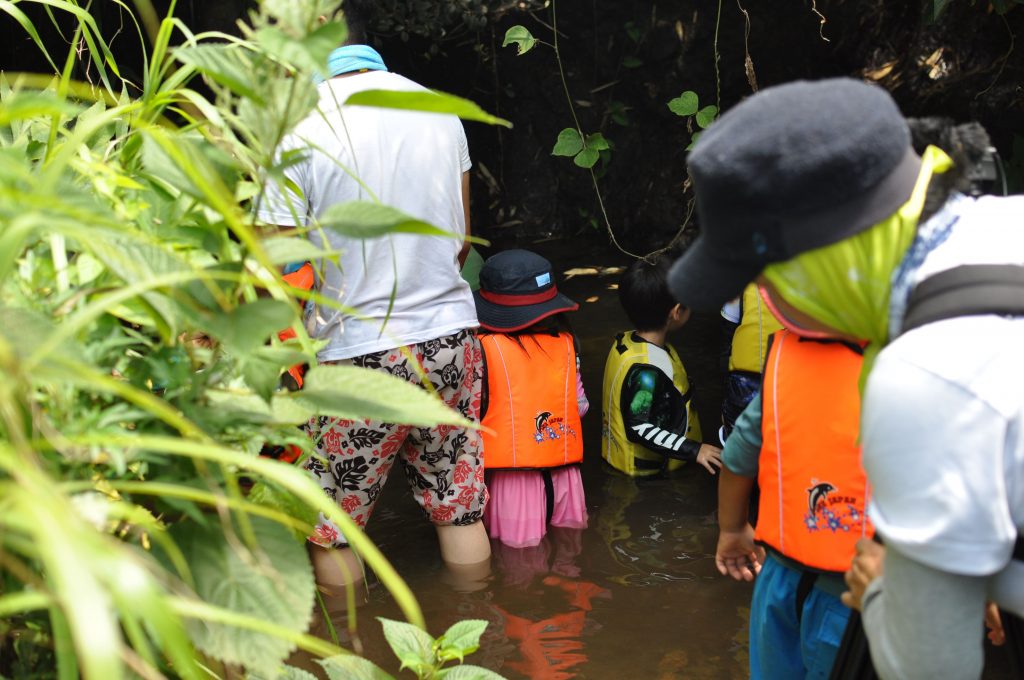
After the excursion in the mountains, we came back to the beach and had lunch.
We went back to the ocean again for around an hour, had a wash, got dressed and came back to Yamanoko by bus.
—
As soon as we had a little break, time for bath! Thanks to Suiden Terrasse team and their great support and understanding, we were able to use their spa. As the sun slowly went down and the remains of the sunray illuminated us in the garden, preparation for dinner began. The live crabs and shellfish we caught were dropped into the boiling soup -they all stopped moving about and gradually turned their colours into warm red.
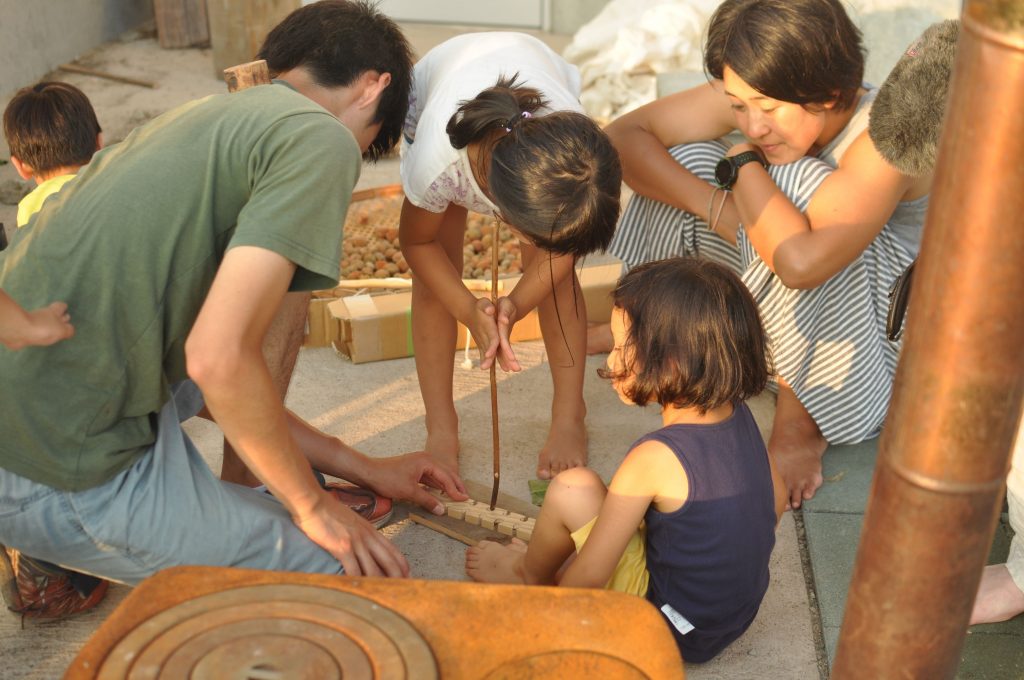
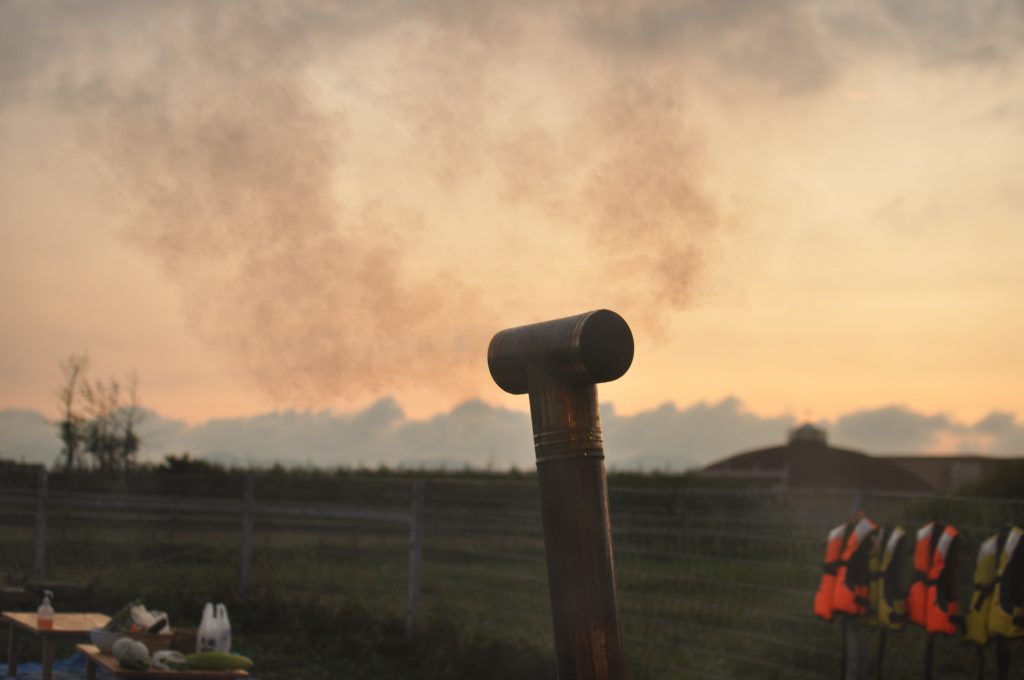
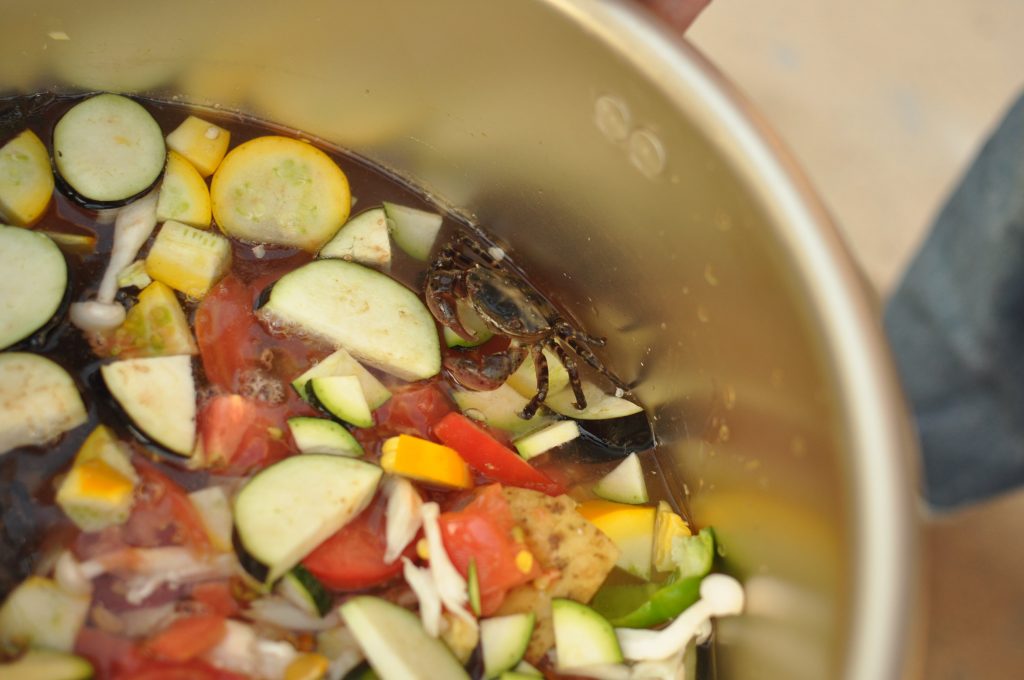
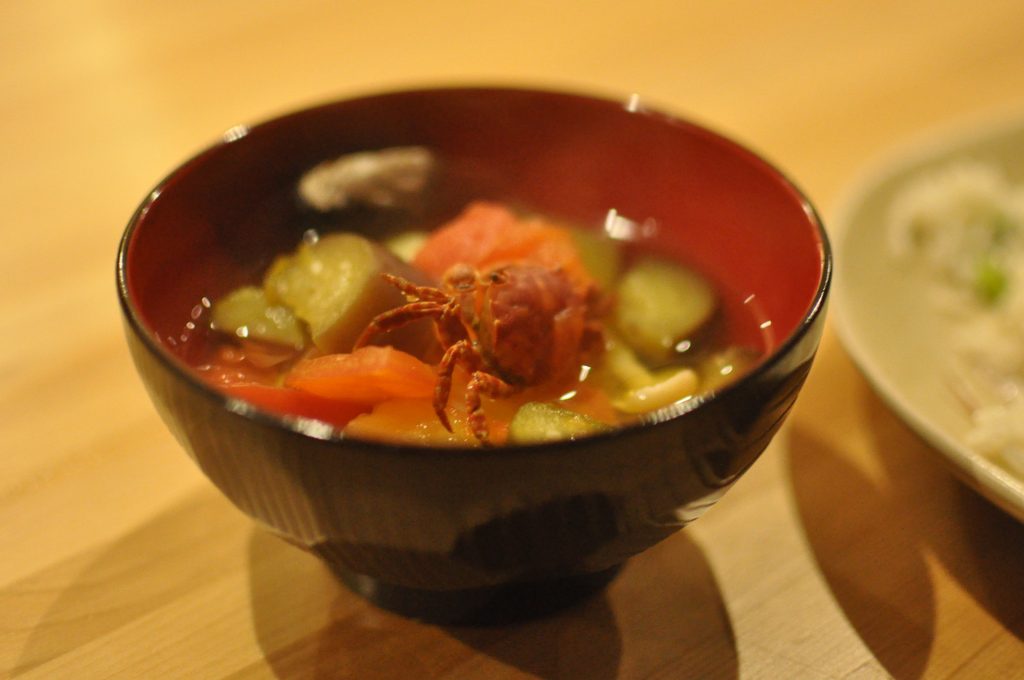
While we prepared dinner, we also put up a big tent (thank you GLN for your kind offer to lend us!) for us to spend the night. The sun goes down quietly. Savouring the homemade rice cooked with shellfish and vegetable soup, I felt as though we could taste every single moment children had spent during the day.
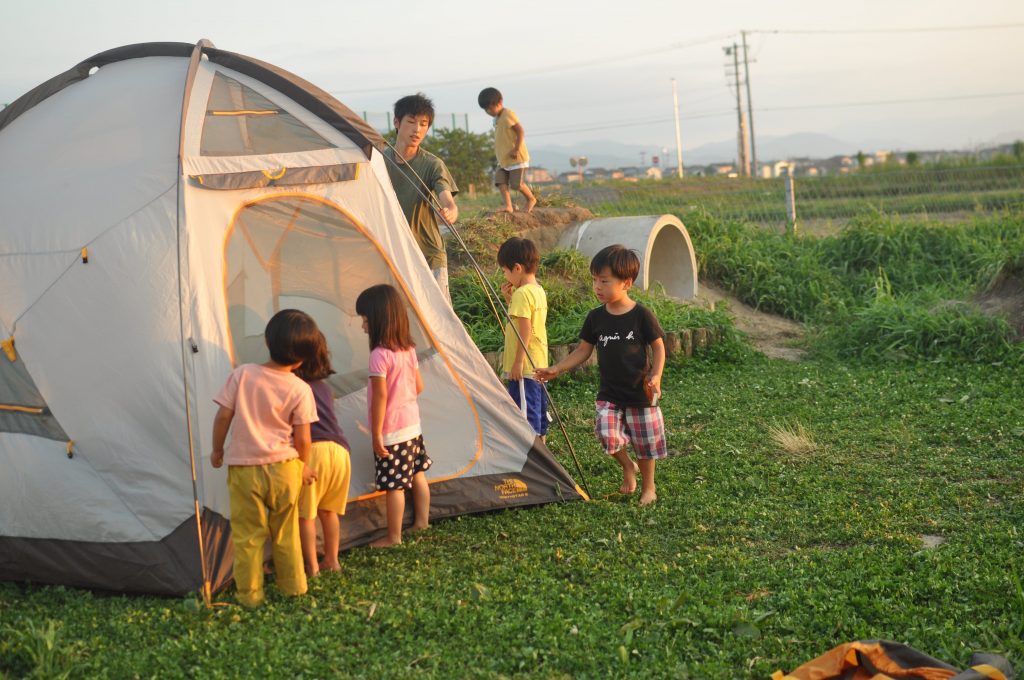
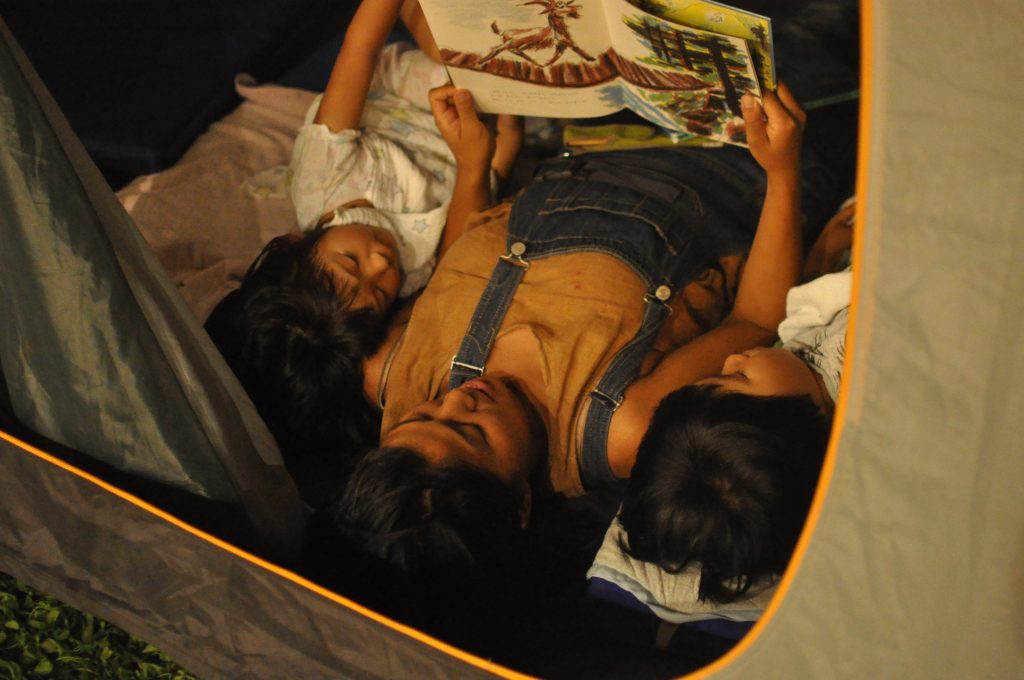
By 20:00, all the children were in bed at their desired room -inside Akebi classroom or the tent. We spent the night in peace and welcomed the morning sun. A morning different, yet special than usual -finding children looking a little tired from the long day and night spent, we adults decided to make breakfast and meanwhile let children go out for a morning walk. After the walk we enjoyed breakfast, and had circle time.
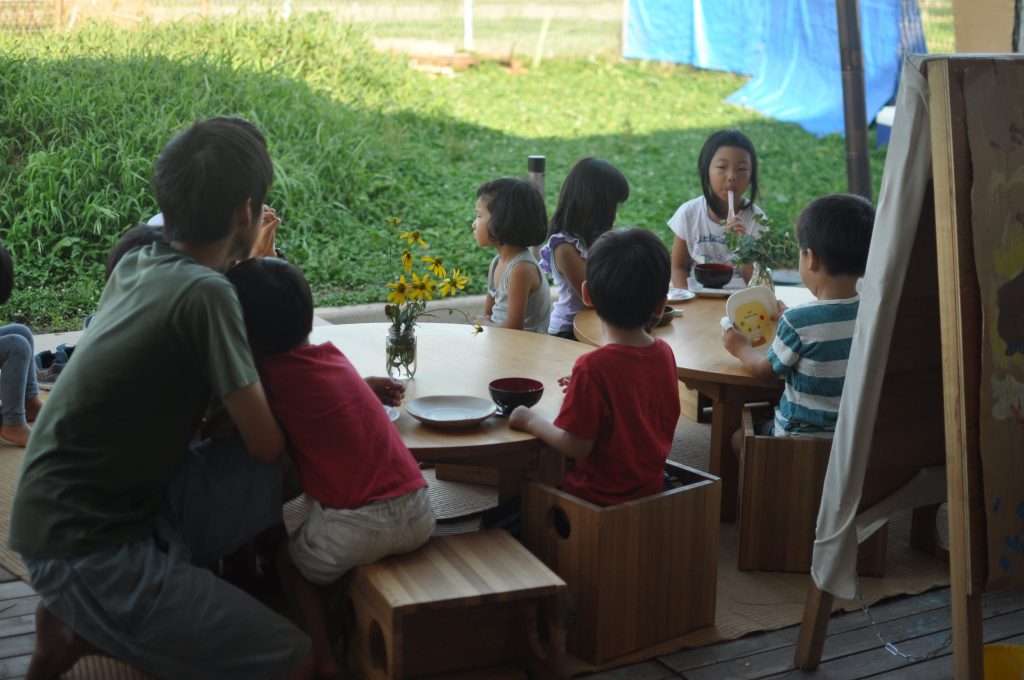
C-san proposed to class the idea to create a big piece of drawing about what we did throughout the camp. We all sat under the tarp in the garden and began the work. The waves splashing, the rocks by the shore, the colours of the ocean, the crabs we caught and ate -all of these and many other things were drawn in the big piece of paper.
In the meantime -it was finally time to say goodbye. After children ate slices of watermelon after suikawari, or watermelon splitting, they left one after another greeting “see you Monday!” to each other, just like the usual end of the week. We wonder what topics came up at the dinner table that day!
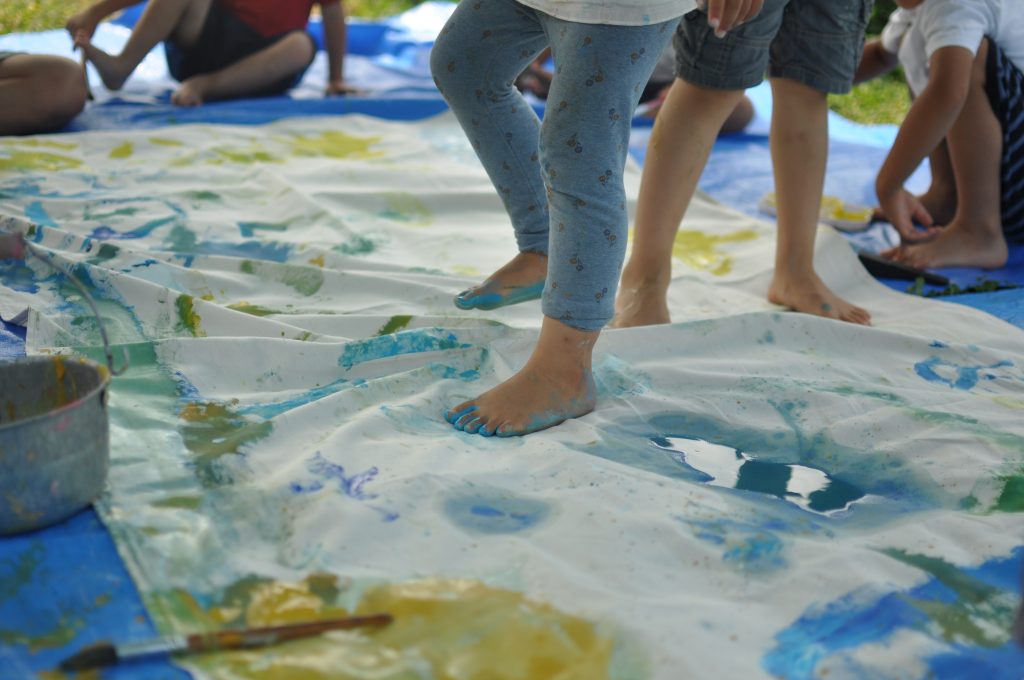
—
Last but not least, please allow me to introduce an excerpt from class journal on 5th August by Takuto Kashiwagi.
—
I believe that people get to know about each other, and realise oneself by spending time together. We encounter different kinds of people, interact, broaden the world each of us live in, and learn ways to tackle tasks. Learning proactively takes time and requires to bear a burden -however, I believe in the process of learning (that is, letting it go for a while until reaching rich satisfaction and understanding) there lies a distinctive power necessary to live, that is worth its weight in gold…let us watch from afar the state of children growing stronger day by day.
—













 PREV
PREV